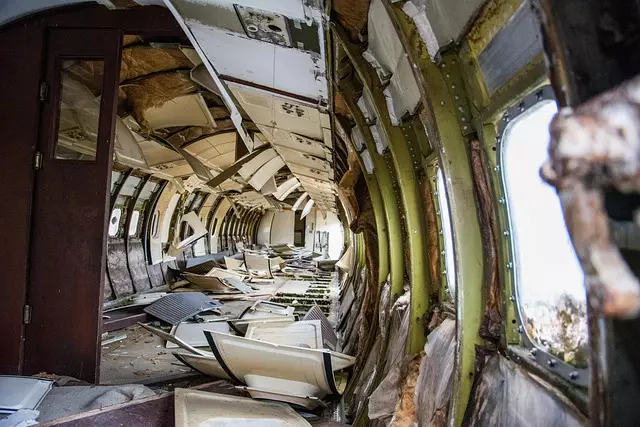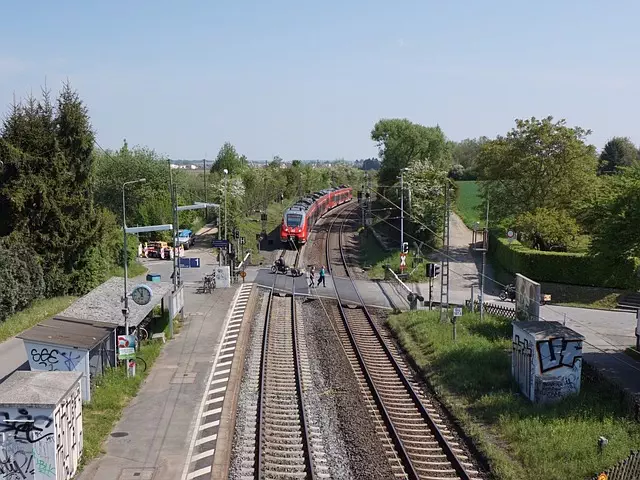Construction Site Negligence in The Bronx: Understanding Spinal Cord Injury Law

In The Bronx, where construction sites are abundant, spinal cord injuries (SCIs) caused by negligenc…….
The bustling construction sites of The Bronx, a vibrant borough of New York City, often represent the pulse of urban development. However, beneath the excitement and progress lies a critical issue that demands attention—construction site negligence. This phenomenon encompasses a range of unsafe practices, mishandling, and regulatory failures that can have profound implications for workers, surrounding communities, and the overall success of construction projects. In this article, we embark on a comprehensive journey to unravel the complexities of construction site negligence in The Bronx, exploring its various facets, impacts, and potential solutions. By delving into this topic, we aim to shed light on the challenges faced by stakeholders and propose strategies to foster safer and more sustainable construction practices.
Definition: Construction site negligence refers to the failure to adhere to industry standards, safety protocols, and legal obligations during construction activities, leading to potential harm or loss. In the context of The Bronx, this includes a wide array of infractions, from inadequate safety gear provision to poor site management practices and environmental considerations.
Core Components:
Safety Protocol Violations: This involves ignoring established safety guidelines, such as lacking proper personal protective equipment (PPE), inadequate training for workers, or failing to implement risk assessment protocols.
Site Management Negligence: Poor site organization, lack of clear communication, and ineffective supervision contribute to negligence. Inadequate traffic control, unsecure structures, and hazardous material storage are common issues.
Regulatory Disregard: Construction projects in The Bronx must comply with local, state, and federal regulations. Negligence occurs when developers or contractors ignore these rules, including building codes, environmental permits, and worker compensation requirements.
Historical Context:
The Bronx has witnessed significant construction growth over the years, driven by urban renewal initiatives and a burgeoning real estate market. However, this rapid development has also highlighted the need for stringent safety measures. Historical cases of construction site accidents in the borough have underscored the importance of addressing negligence issues. From structural failures to workplace injuries, these incidents have shaped the regulatory framework and prompted increased scrutiny of construction practices.
Significance:
Worker Safety: Construction site negligence poses significant risks to workers’ lives and well-being. Falls, equipment accidents, and exposure to hazardous substances are common concerns.
Community Impact: Negligent construction can disrupt nearby communities through noise pollution, dust, and traffic congestion. It may also lead to long-term environmental damage if not properly managed.
Legal and Financial Ramifications: Builders and contractors face legal liabilities, including lawsuits, fines, and project delays due to negligence. These issues can severely impact a company’s financial health and reputation.
Construction site negligence is not confined to The Bronx; it is a global concern with varying degrees of severity across regions.
International Influence: Many countries have adopted international safety standards, such as those set by the International Labour Organization (ILO), to combat negligence. However, enforcement remains inconsistent, especially in developing nations.
Regional Disparities: Developed countries like the United States and Western Europe tend to have stringent construction safety regulations, while emerging markets struggle with inadequate legislation and enforcement. Asia Pacific regions, for instance, are witnessing rapid urbanisation but often face challenges related to worker protection and site management.
Trends Shaping the Future:
Digital Transformation: The adoption of technology, such as Building Information Modeling (BIM), offers improved safety management and risk assessment capabilities.
Sustainability Focus: Environmental considerations are gaining prominence, driving the need for eco-friendly construction practices and site management strategies.
Data-Driven Safety: Advanced analytics and data collection enable more proactive safety measures, helping to predict and prevent accidents.
The economic landscape of The Bronx is closely intertwined with its construction sector, making negligence a critical factor in the region’s development.
Market Dynamics: A thriving real estate market drives construction activity, attracting investors and developers. However, rapid growth can lead to a lack of available resources and skilled labor, exacerbating safety concerns.
Investment Patterns: Large-scale infrastructure projects often require substantial investments, making them high-risk ventures. Negligence can result in project delays, cost overruns, and legal battles, impacting investor confidence.
Economic Impact: Successful construction projects contribute to the local economy through job creation, business opportunities, and increased property values. Conversely, negligence-related issues can lead to economic setbacks, including lost revenue, higher insurance premiums, and reduced investor interest.
Technology plays a pivotal role in addressing construction site negligence, offering both solutions and challenges.
Innovations and Their Impact:
Safety Wearables: Smartwatches and sensors embedded in clothing can monitor worker vital signs, detect falls, and track location, providing real-time data for emergency response.
Drone Surveillance: Drones equipped with high-resolution cameras and heat sensors can inspect construction sites, identifying hazards like unsafe structures or unauthorized activities that might evade human observation.
Virtual Reality (VR) Training: VR technology offers immersive training experiences, enabling workers to practice safety protocols in a risk-free environment.
Challenges:
Implementing these technologies requires substantial investment and specialized skills. Smaller construction companies may struggle to adopt them due to cost constraints.
Data privacy and security are essential considerations, especially with the increasing collection of worker and site information.
Combating construction site negligence in The Bronx demands a multi-faceted approach involving stakeholders from various sectors.
Government and Regulatory Authorities:
Enforcement and Penalties: Stricter enforcement of existing regulations, including fines and license revocations for repeat offenders, can serve as a powerful deterrent.
Regulatory Updates: Regularly reviewing and updating building codes and safety standards to incorporate the latest technologies and best practices.
Public Awareness Campaigns: Educating both workers and community members about construction site safety and their rights.
Industry Initiatives:
Safety Training Programs: Developing comprehensive training programs that go beyond basic safety courses, focusing on advanced topics like risk management and emergency response.
Industry Collaboration: Encouraging collaboration between contractors, subcontractors, and suppliers to share best practices and promote a culture of safety.
Incentives for Safe Practices: Offering incentives or recognition programs for builders who consistently maintain high safety standards.
Technology Integration:
Mandatory Technology Adoption: Consider making the use of certain safety technologies (e.g., wearables, drone surveillance) mandatory, providing resources and training to facilitate implementation.
Data Sharing Platforms: Creating digital platforms where construction companies can share safety data, lessons learned, and best practices anonymously, fostering a culture of continuous improvement.
Community Engagement:
Community Oversight: Establishing community advisory boards to monitor construction projects and address concerns, ensuring that local residents’ voices are heard.
Open Communication Channels: Providing clear and accessible communication channels for workers, residents, and contractors to report safety issues or environmental concerns.
Construction site negligence in The Bronx is a complex issue that demands immediate attention to ensure the well-being of workers, communities, and the overall success of construction projects. By understanding the multifaceted nature of this problem, we can propose targeted solutions involving government, industry leaders, technology developers, and community members. Embracing a proactive approach that combines stringent regulations, advanced technologies, comprehensive training, and open communication channels is essential to fostering safer and more sustainable construction practices in The Bronx and beyond.

In The Bronx, where construction sites are abundant, spinal cord injuries (SCIs) caused by negligenc…….

Construction sites in The Bronx, though vibrant with activity, pose significant risks if safety prot…….

In Manhattan and The Bronx, two prominent New York City areas, medical malpractice and construction…….

In The Bronx, fall accidents at construction sites are a leading cause of severe injuries and fatali…….

In Queens, New York, product liability law protects consumers from defective products, including tho…….

Truck collisions in Queens and The Bronx, driven by factors like driver fatigue, vehicle maintenance…….

In The Bronx, bus accident settlements vary based on factors like liability, injury severity, and in…….

Construction site negligence in The Bronx carries severe legal repercussions for trucking companies……..

Motorcycle crashes in urban centers like Brooklyn and The Bronx are on the rise due to construction…….

In New York State, product liability law protects consumers from unsafe products, holding manufactur…….